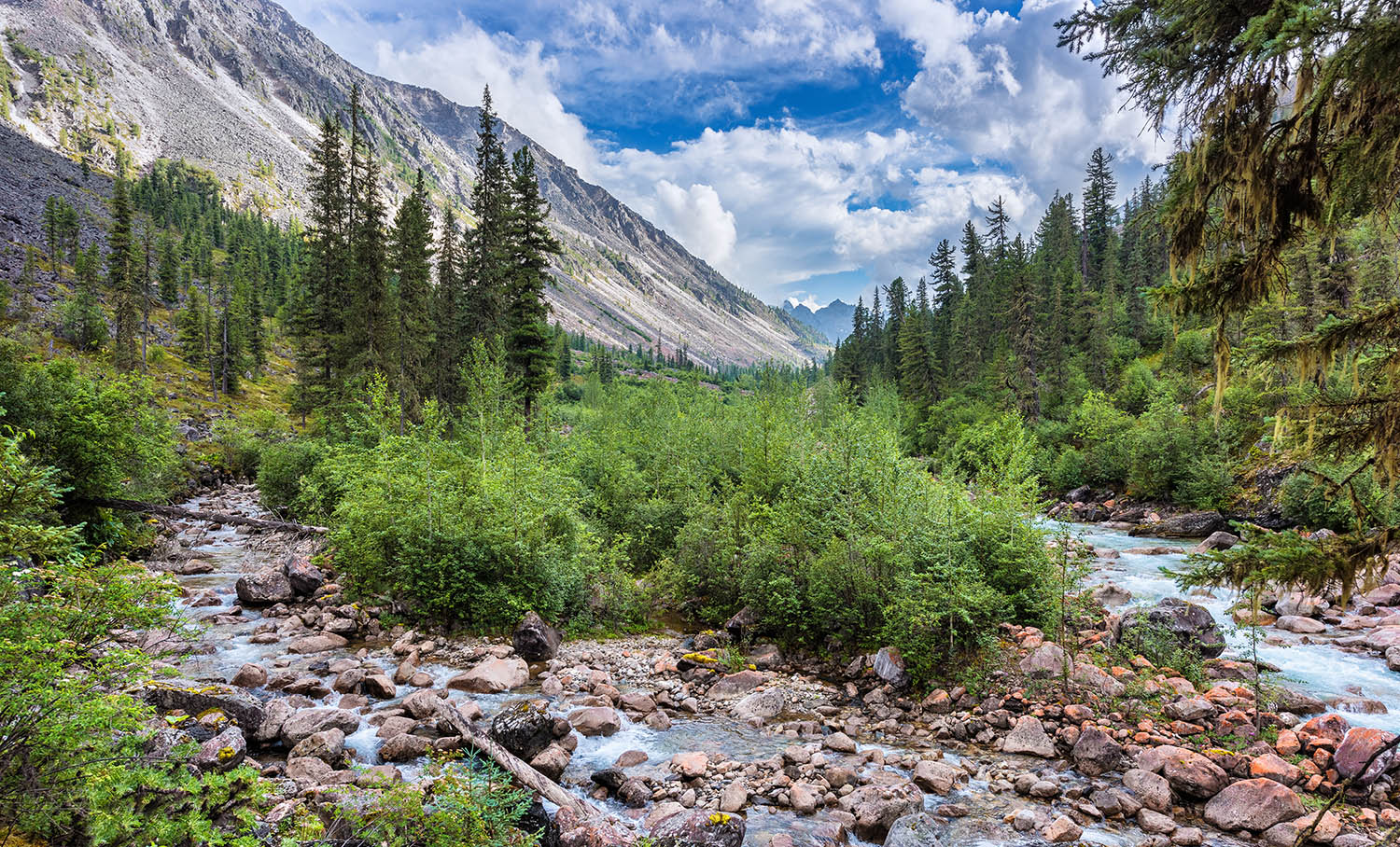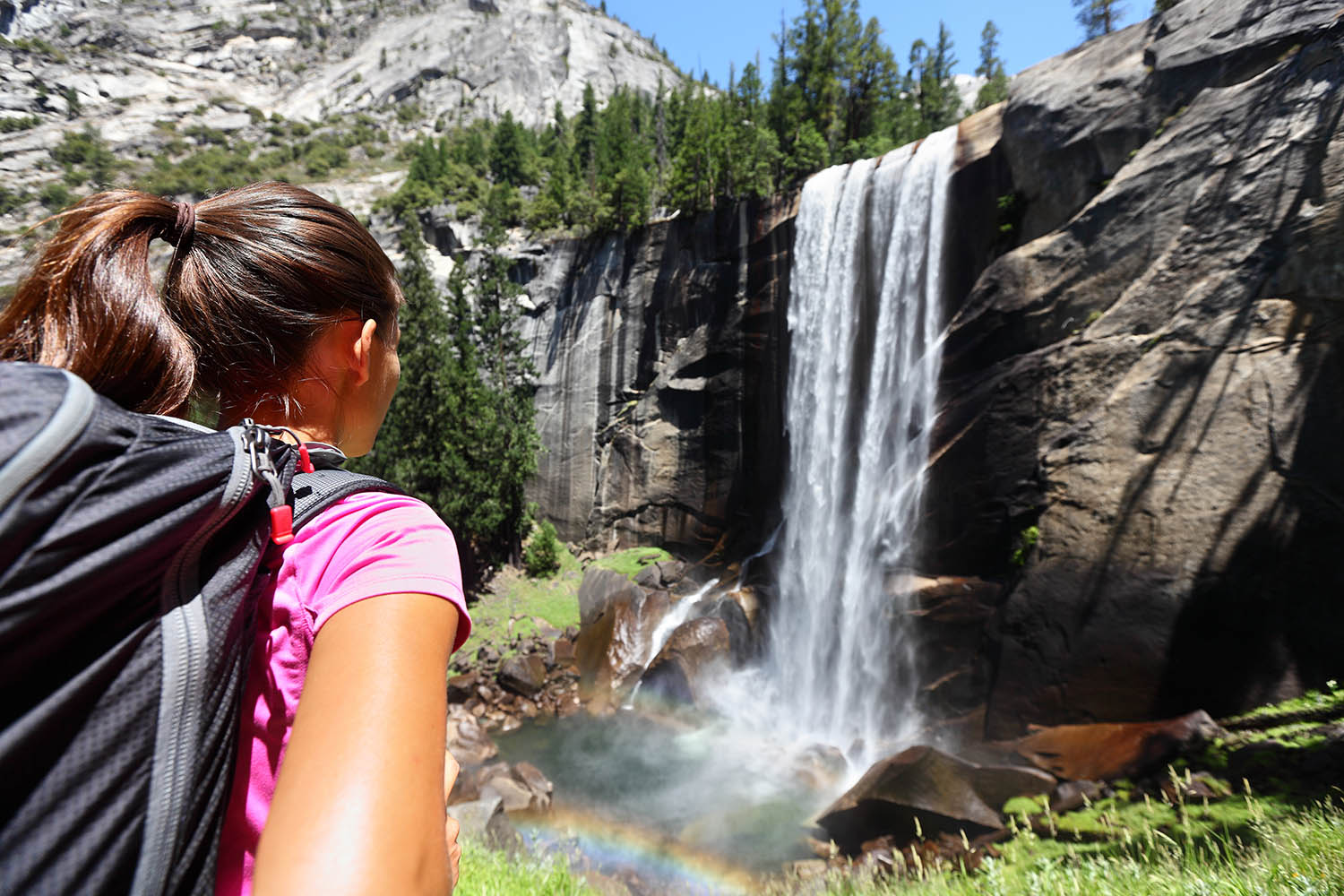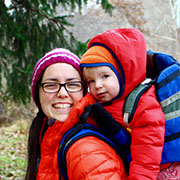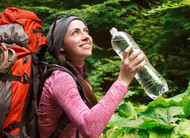3 Easy Ways to Source Water in the Backcountry
Posted by Sarah Z., Former Wilderness Instructor (Guest post) on Sep 7th 2017
When packing to embark on a wilderness journey, we all plan on being prepared. Backpacks, tents, stoves…even the proper "backpacking coffee-making apparatus" (good coffee belongs in the woods too). In fact, if you are like some of us self-proclaimed "gear junkies", you might spend a lot of time and effort researching the very best gear for your trekking needs. After all, the first rule of Leave No Trace (LNT) is: Plan Ahead and Prepare.
So, what about water? Your beautifully planned hike in the woods may indeed come to a screeching halt if you haven't put thought into your water needs.

For a few years, I had the privilege of working in the outdoor field. I planned and led trips of students in the beautiful backcountry. Much to my good fortune, most of my programming days were spent in the spring-water rich Ozark Mountains of southern Missouri or the breathtakingly beautiful Blue Ridge Mountains of western North Carolina. In both cases, water was abundant and generally pretty clean and fresh. Mountain springs are a wonderful thing.
However, rarely do you have a fresh spring right by your campsite or just when you need it on the trail. So, here are some fairly simple rules on being prepared to drink water in the woods.
1.) Find the best water source available.
I use the CCR rule which stands for Cool, Clear and Running for best results. If there are cows standing in the water directly upstream from you, this might not be the best water from which to fill your bottle. Drinking water out of a stagnant, rust colored pool might work…if you are about to die, but for your everyday hiking needs, a clear, flowing stream is the best choice by far.
2.) Don't chance it, ALWAYS treat water.
Even if you find the most beautiful rippling brook in the woods you better not risk getting down on all fours and embracing the "back to nature" experience of drinking straight out of the creek. Purification of some sort is always a good rule of thumb.
There are varying methods thought safe for the purification of water in the backcountry. Many old-school, backcountry adventurers still stick to the very simple method of carrying a bottle of bleach, iodine, or beta-dine. There isn't much to this kind of purification at all: Simply pick your water source, fill your bottle having the mouth of your bottle pointed downstream is always a good idea. This method keeps sticks, bugs and leaves from joining your drink and put in a few drops of whichever chemical you prefer. The amount of drops will vary, depending on how good you believe your water source to be, but usually 3-5 drops per liter is more than adequate.

Burp your bottle to ensure that the threads are purified by holding the bottle upside down with the lid closed, and slowly unthreading it until you see a series of several bubbles. Let it sit for 20-30 minutes before drinking.
Pros - Cheap, simple and easy and takes up virtually no space. Cons - Your water will be tainted with the flavor of a chemical. However, Iodine based treatments may be toned down with a few drop of hydrogen peroxide after the purification period, however this adds more time to your purification, as it takes another 20 minutes to complete the process.
Other slightly more complicated and expensive methods are various filtration systems. There are multiple varieties that use either pumps or gravity to move the water through the filter. These filter systems are extensively tested and remove bacteria, E.Coli, chemicals, and improve taste. The HydroBlu Versa Flow is one of those filters as it removes 99.999% of all bacteria.
Pros - Clean filtration with fresh water flavor. Cons - Cost, more bulky, and they can be more time consuming than dropping bleach in your bottle.
A well tuned filter will get clean water in your mouth faster if you run out of water. Flow rate is a factor of maintenance, setup, and on occasion, filters tend to get clogged, especially in the eastern part of the country where water tends to be more silt laden. Usually they just require some sort of back flush, but can sometimes take substantial effort to get cleaned out, mostly when they have been neglected.
3.) Don't wait until you are out of water to find and filter more.
Try to always have a bottle or bag full. You never know what kind of adventures a day may hold.
There are always new, sleeker purification methods coming out, such as Steri-Pens that use UV light to kill undesirable organisms in your water, and filters are getting more affordable and streamlined. So personal research on products that will serve your needs best is always recommended. However, whichever system you choose, it should be pretty simple to be prepared for all your wilderness drinking needs.
Pick a good water source. Filter your water well. Always keep extra on hand.

Get to Know Sarah:
Currently living outside of Pittsburgh, PA with her husband and toddler, Sarah is passionate about the outdoors, drinking really good coffee and capturing life through the lens of her camera. Sarah and her husband both spent several years as wilderness instructors leading trips in the Blue Ridge Mountains, Ozark Mountains and Wyoming wilderness. Nowadays, Sarah can be found enjoying an adventure of a different kind as she stays at home with her son and passes on her love for the great outdoors.

